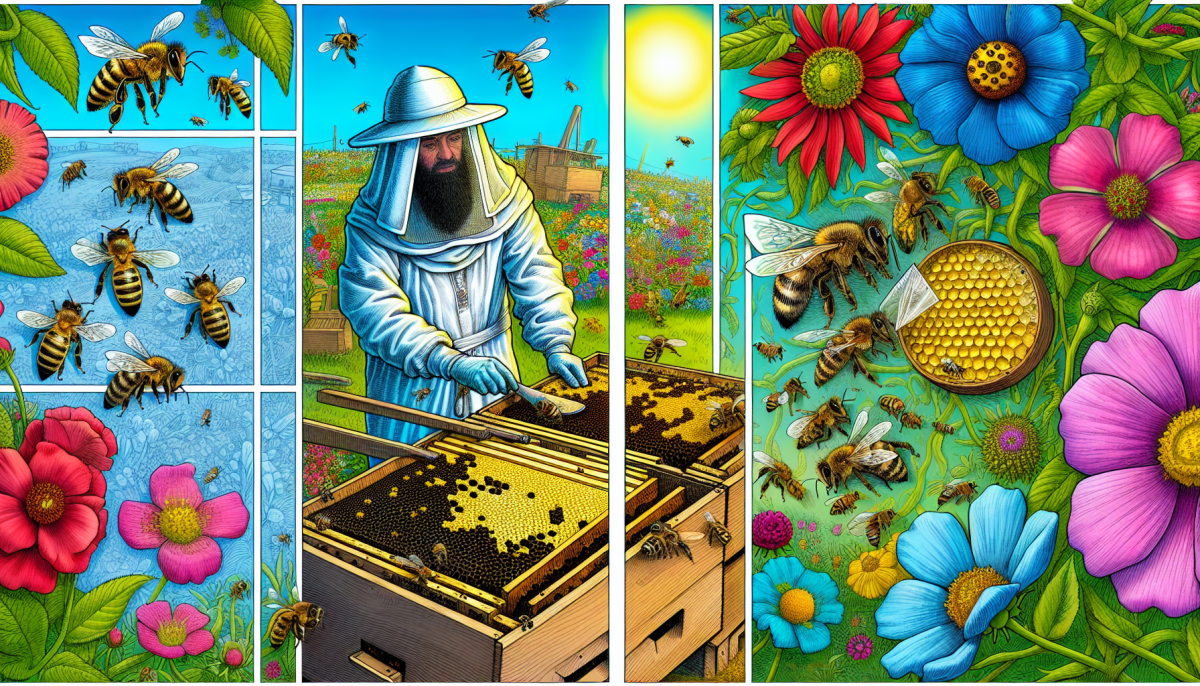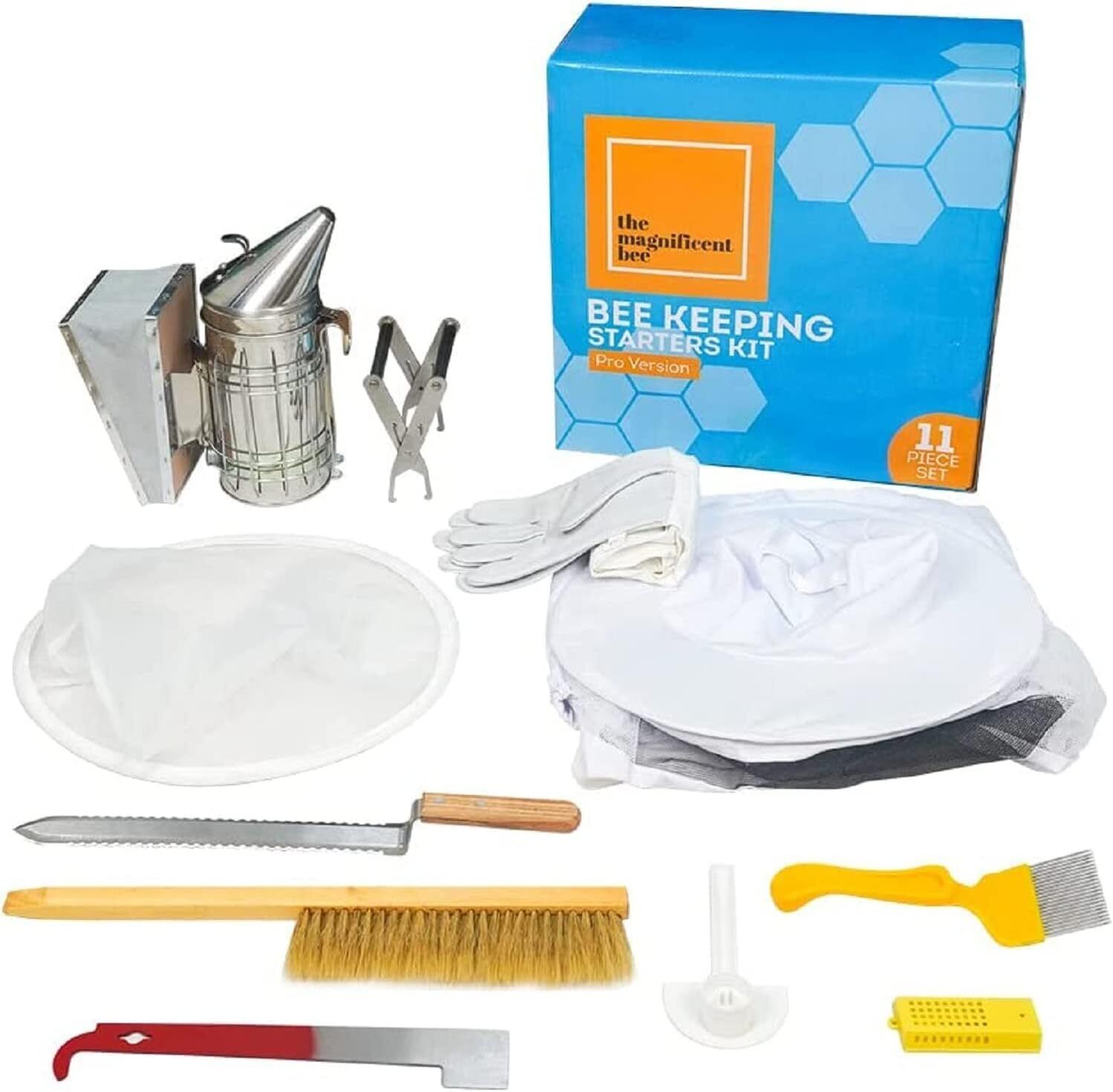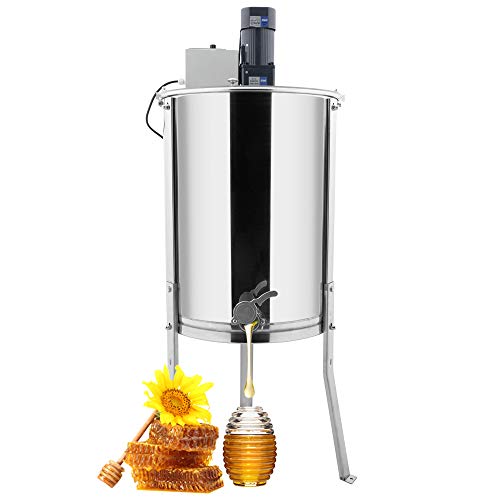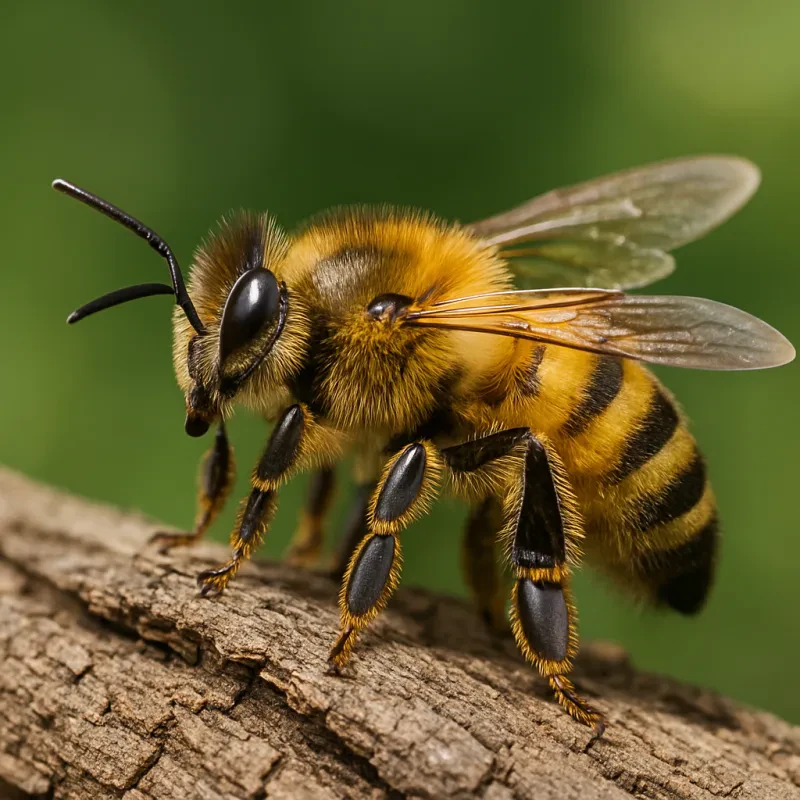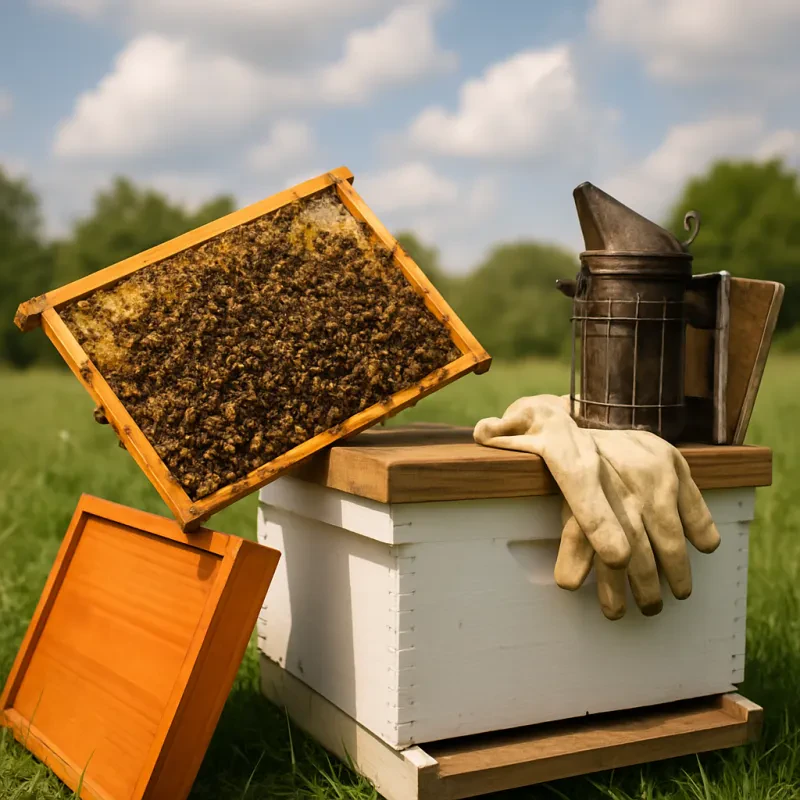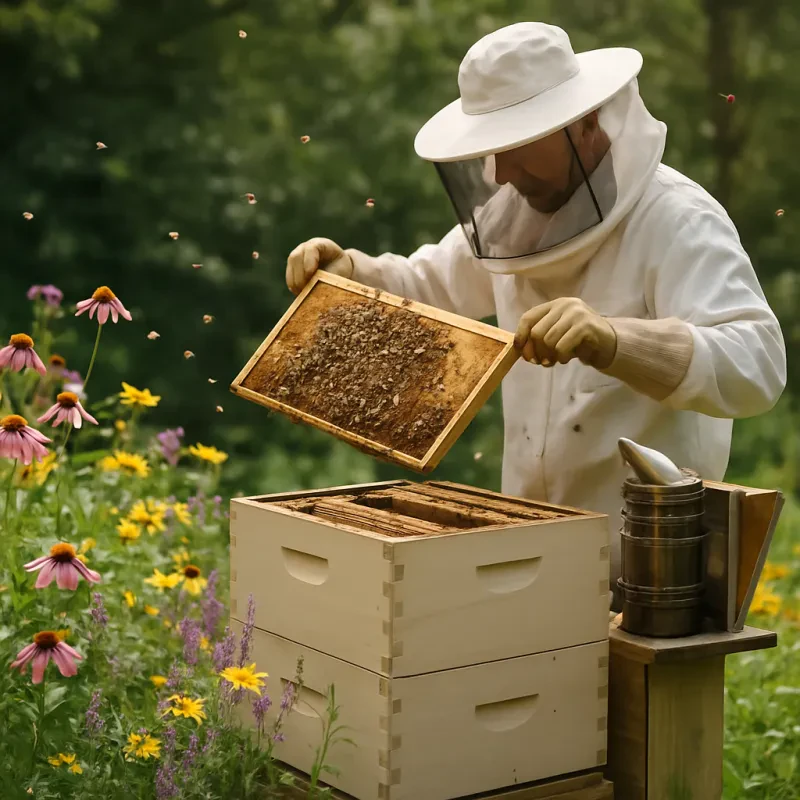$79.99
4.54 out of 5 starsBeekeeping Starter Kit: 11-Piece All-in-One Set
Get everything you need to begin your beekeeping journey with this comprehensive 11-piece all-in-one Beekeeping Starter Kit
Product information
Product Review Score
Product links
Beekeeping at home, also known as apiculture, is an increasingly popular hobby and small-scale agricultural practice that involves the care and management of bee colonies, primarily for honey production and pollination services. It offers numerous benefits, including the production of high-quality honey, wax, and other bee products, as well as contributing to the biodiversity and health of ecosystems through pollination. However, successful beekeeping requires knowledge, preparation, and commitment. This guide aims to provide a comprehensive overview of home beekeeping, covering the essential aspects from getting started to advanced management practices.
Understanding Bee Biology and Behavior
Before diving into beekeeping, it's crucial to understand the basic biology and behavior of bees. Honey bees (Apis mellifera) live in complex social colonies, each comprising a single queen, thousands of worker bees, and, during certain seasons, drones. The queen's primary role is to lay eggs, while worker bees perform various tasks including foraging for nectar and pollen, feeding larvae, and maintaining the hive. Drones' sole purpose is to mate with a new queen.
Understanding bee behavior, such as swarming (a natural process where a new queen and a portion of the colony leave to establish a new hive), foraging patterns, and communication methods (e.g., the waggle dance), is essential for effective beekeeping.
Legal Considerations and Community Relations
Before setting up a beehive, it's important to research and comply with local regulations, which may include registering your hives, maintaining certain distances from property lines, and obtaining permits. Additionally, consider informing and educating your neighbors about beekeeping to mitigate concerns about bee stings and encourage community support.
Choosing Beekeeping Equipment and Honey Bees
Hive Types
The most common hive types include Langstroth, Top-Bar, and Warre hives. Each has its advantages and considerations in terms of management, space, and honey production efficiency. Langstroth hives, characterized by their removable frames, are widely used due to their ease of inspection and honey extraction.
Protective Gear and Tools
Essential beekeeping gear includes a bee suit or jacket, gloves, a veil to protect your face, and a smoker to calm bees during hive inspections. Tools such as hive tools and extractors are also necessary for hive management and honey processing.
Obtaining HoneyBees
Bees can be obtained through several methods, including purchasing packages of bees, nucleus colonies (nucs), or capturing swarms. Each method has its pros and cons, with nucs generally considered a good starting point for beginners due to their established colony structure.
Hive Management and Maintenance
Successful hive management involves regular inspections to monitor the health and productivity of the colony, manage pests and diseases, and ensure the queen is present and laying eggs. Key tasks include:
Feeding: Providing sugar syrup or pollen patties during times of scarcity.
Pest and Disease Management: Monitoring and treating for pests like Varroa mites and diseases such as American Foulbrood.
Swarm Control: Taking preventative measures to manage swarming, which can lead to the loss of bees.
Harvesting Honey and Other Products
Honey can typically be harvested once or twice a year, depending on your location and the productivity of your bees. The process involves removing frames, extracting the honey, and filtering it. Beekeeping also yields other valuable products like beeswax, propolis, and royal jelly.
Challenges and Considerations
Beekeeping at home comes with its challenges, including the risk of stings, the potential for hive losses due to pests, diseases, or environmental factors, and the time commitment required for proper hive management. Education, mentoring from experienced beekeepers, and active involvement in beekeeping communities can significantly enhance your success and enjoyment of the hobby.
Take a leap into Beekeeping
Home beekeeping is a rewarding practice that supports the environment, enhances gardens through pollination, and produces delicious honey and other bee products. With the right knowledge, preparation, and care, anyone can embark on the journey of beekeeping. Remember, successful beekeeping is not just about managing bees but also about becoming a steward of the environment, fostering biodiversity, and contributing to the health of local ecosystems.
$299.99
4.52 out of 5 starsElectric Stainless Steel 4 Frame Honey Extractor
Efficiently Extract Exquisite Honey with our Electric Stainless Steel 4 Frame Honey Extractor
Product information
Product Review Score
Product links
